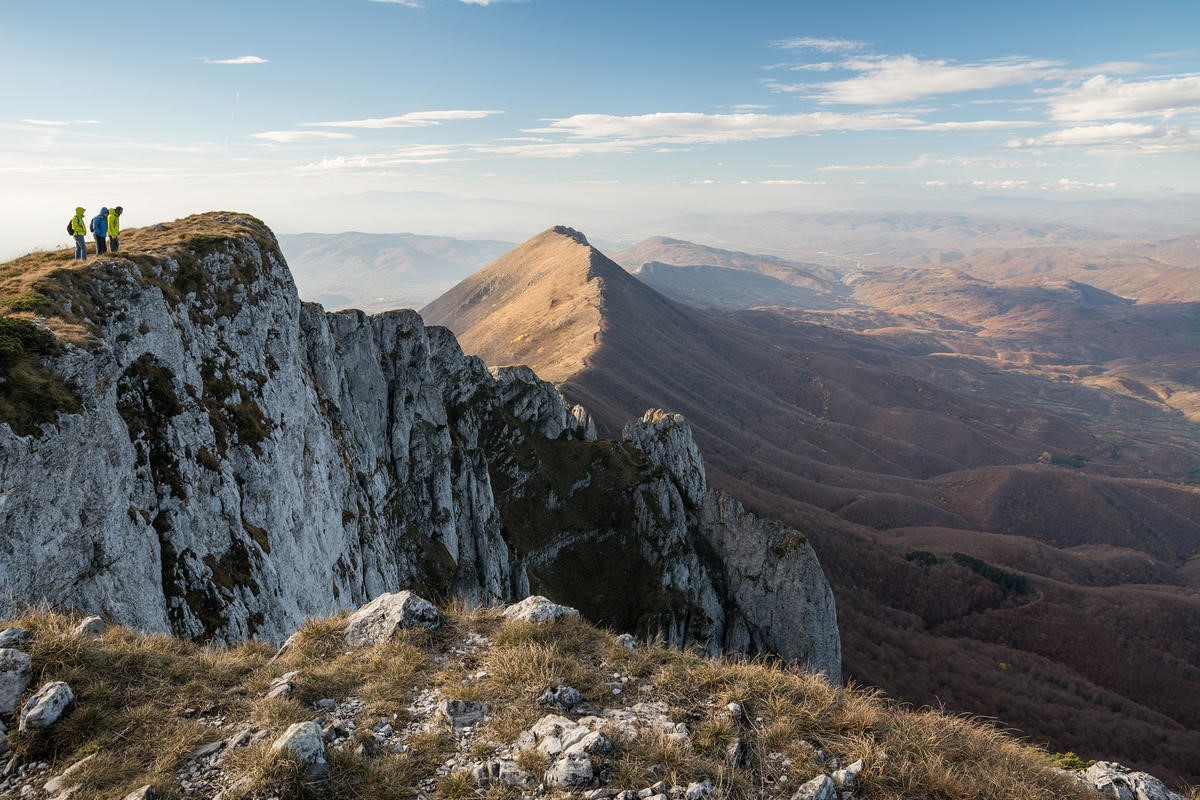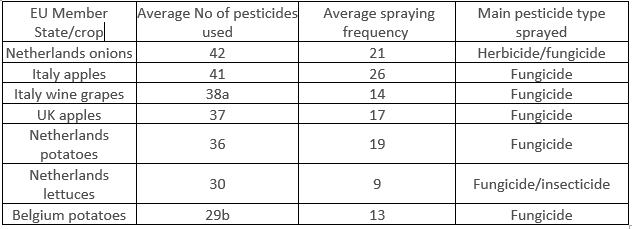Earth Law Center Partners with Earth Thrive for Rights of Nature Campaign in Serbia
Bela Palanka, Pirot, Serbia by Milos Golubovic via Flickr Creative Commons
By Hannah Fitzpatrick
Earth Law Center and Earth Thrive have launched a campaign to establish legal rights for nature in the Republic of Serbia in the Balkans region of Europe.
Brief Introduction to Serbia
Serbia is located about 400 miles west of Italy as part of the West Balkans.
Serbia Map by Wikimedia Commons
The Ottoman and Austro-Hungarian empires once governed the territory. Later it became part of Yugoslavia, along with Montenegro, Slovenia, Croatia, Bosnia-Herzegovina and Macedonia.
In 2006, modern Serbia emerged when Montenegro voted for independence from the Union of Serbia and Montenegro. As of 2016, Serbia had a population of about 7 million [1].
Serbia’s Incredible Biodiversity
Eurasian Otter by Wikimedia Commons
Although Serbia and neighboring Montenegro cover less than 2% of European territory, over half of Europe’s fish species and over two-thirds of European bird and mammal species can be spotted here [2]. Nature lovers may even see some of Europe's many endangered species living in the area, such as the white-tailed eagle, Eurasian Otter, pelicans and falcons [3].
One mammal well known in the Balkans region is the European ground squirrel. Unfortunately, due to the conversion of its natural steppe-grassland and pasture habitat, this species has already vanished from parts of its Central/Eastern European territory [4]. The International Union for Conservation of Nature lists the species as vulnerable, meaning it faces a high risk of extinction. Serbia also provides a resting place and breeding ground for many migratory species of birds and bats on their journey south in the spring [5].
The amazing biodiversity of Serbia must be protected permanently, both for its own sake and for future generations of people to enjoy.
Threats to Balkan Waterways
A flurry of planned hydroelectric dam projects threatens to impede many of Europe’s last free-flowing rivers, imperiling aquatic species and inundating ecosystems along the way. Out of 2,800 planned dams in the Balkans, around 800 are planned in Serbia alone! Most of those projects call for the 'biological minimum' rather than the 'biological maximum' to be taken into account with these developments [6]. “The Balkan rivers are of outstanding value within Europe. The dam tsunami is threatening biodiversity and local communities,” said Ulrich Eichelmann of Riverwatch [7].
Austria’s Erste & Steiermaerkische Bank has financed a cluster of seven hydroelectric plants on Bosnia’s borders with Serbia’s Kopaonik National Park. These, together with another eight plants in the area financed from other sources, have left large stretches of the local streams with little or no water for much of the year. Another large dam is planned for the Drina River – a "wild emerald beauty" that forms part of Serbia’s border with Bosnia and Herzegovina [8].
A Crisis of Pesticide Overuse
Serbia’s ecosystems and communities are also being poisoned by the excessive use of harmful pesticides. With 57% of Serbian land dedicated to agricultural production, the oversaturation of the land with chemical pesticides has a broad and severe impact on ecosystems and human communities [9].
The government passed much-needed legislation to regulate the use of pesticides in Serbia. For example, in May 2009 the Serbian government adopted two new laws related to pesticides [10]. The first (“Law on Biocidal Products”) regulates the use of “biocidal” products, including through labeling, marketing restrictions, and safety mechanisms. The second (“Law on Plant Protection Products”) pertains to the registration, control, circulation, import, and application of “plant production products” such as pesticides [11].
But these measures have not gone far enough. The use of pesticides on average in Serbia, and across Europe in general, has not decreased in recent years, despite low dosage pesticides being introduced into the European agricultural market. To the contrary, pesticide use has increased as organisms adapt to become more resistant [12]. We need a different approach.
Pesticides Also Kill Endangered Wildlife
White-Tailed Eagle by Wikimedia Commons
The border region between Serbia, Croatia, and Hungary is among the most important areas for white-tailed eagles in Europe [13]. In 2014, World Wildlife Fund (WWF) registered only 22 breeding pairs in and around Serbia’s Gornje Podunavlje Special Nature Reserve. This same year, 11 dead birds were found in the reserve’s vicinity, with 8 of them having died of poisoning by carbofuran – one of the most toxic pesticides on the market [14].
The EPA in the US has banned Carbofuran. Carbofuran poisons wildlife including coyotes, kites, golden eagles and buzzards but is particularly toxic to birds. In its granular form, a single grain will kill a bird. Birds often eat numerous grains of the pesticide, mistaking them for seeds, and then die shortly thereafter [15]. Only five White-Tailed Eagles reach sexual maturity a year and they reproduce in monogamous couples. So losing even one bird is a big loss. Yet since 2009, 33 White-tailed Eagle carcasses have been found in Serbia. The culprit? In a majority of the cases: pesticide poisoning [16].
Because Carbofuran may affect the nervous system [17], it also affects humans and large carnivores [18] like the protected species in Serbia including Eurasian brown bears and Eurasian lynx [19].
Pesticides Harm Human Health Too
Pesticides linger on fruits and vegetables which humans then consume. In a 2013 study, 27% of all fruit and vegetables sold on European markets contained residue from multiple types of pesticides. And it’s not just one pesticide – it’s multiple types. An average of 42 different pesticides are used to grow an onion in the Netherlands! This is despite the existence of regulations meant to restrict the use of these harmful chemicals [20].
Figure 1
A 2009 study published in the U.S. National Library of Medicine found that the use of pesticides could contaminate soil, surface and ground water, and vegetation [21]. Heavy treatment of soil with pesticides can also affect soil fertility by causing populations of beneficial soil microorganisms to decline.
Additionally, long-term exposure to pesticides can have serious health impact on humans [22], including development of serious health problems such as Parkinson’s disease, asthma, leukemia, and non-Hodgkin lymphoma [23].
Proven Alternatives to Pesticides Already Exist
Organic farming can reduce these problems, grow enough food for the world and provide robust economic returns. There are already millions of small and midsize organic farms world-wide. Sales of organic food and beverages grew five-fold between 1999 and 2013, according to the Swiss-based Research Institute of Organic Agriculture FiBL [24].
Organic farming rejects synthetic biocides and fertilizers. It uses plant diversity and natural ingredients to fight pests, replenish nutrients in the soil and suppress weeds. Organically grown crops require less fossil fuel than industrially grown crops. They also can remove carbon from the atmosphere at higher rates than conventionally grown crops and return it to the soil, where it promotes crop growth [25].
Serbia’s Legal System
Serbia has taken some notable steps to protect biodiversity [26]. For instance, the Serbian government has established a lot of protected parks in recent years [27]. Currently, about 5 percent of Serbia's land is protected, which includes 4 national parks (with a fifth national park in the works), 22 nature reserves, and about 300 geographical landmarks. The Serbian government has also passed several environmental laws, including the Law on Environmental Protection, which recognizes the human right to live and develop in a healthy environment [28].
Earth Thrive, which works on the prevention of ecocide in the Balkans and for establishment of nature rights, recognized ELC as a leading rights of nature organization in the world and approached ELC to partner on the Serbian Initiative.
Together, we aim to recognize nature's rights and evolve current protections of the beautiful and richly biodiverse yet also highly endangered nature in the Balkans. Earth Thrive is a non-governmental organization that takes a holistic approach to prevent and remediate ecocides and establish rights of nature in the SE Europe/Balkans and Mediterranean region. "Stop Ecocide in Serbia" is one of their primary campaigns, which raises awareness on dam and pesticide impacts as well as animal welfare and other issues.
ELC and Earth Thrive have launched the first rights of nature initiative in the Balkans, beginning with Serbia, through two campaigns:
(1) Establishing legal rights of ecosystems in the Balkans to be free from toxic pollution from pesticides. By recognizing ecosystems in the Balkans as legal entities possessing rights, we can ensure that they are restored to health as a legal right. This campaign will also include defining and establishing a legal right to native, thriving biodiversity for Balkan ecosystems. Practically speaking, this will mean an end to the vastly excessive use of toxic pesticides in this region.
(2) Establishing legal rights for rivers within the Balkans, including a right to flow – a right that may be violated through the development of destructive dam projects. According to the Universal Declaration of the Rights of Rivers, which describes the rights to which all rivers are entitled, “…new dam construction shall only occur when necessary to achieve clean water for … compelling purposes, with such dams only built upon securing the full free, prior, and informed consent of indigenous and other impacted communities….”
This campaign will build from rights of nature victories across the world – including in Ecuador, Bolivia, New Zealand, Colombia, and the United States. It is our sincere desire that by establishing legal rights for nature in Serbia, we can permanently protect nature within its invaluable ecosystems, including within the Balkans.
When our campaign succeeds, it will plant the seed of an innovative solution for humans and nature to truly live together in harmony. Won’t you consider joining us?
Help Us Protect the Planet and Get Involved Today
To help with our efforts in our partnership with Earth Thrive or in general, consider the following options here:
- Donate to ELC
- Donate, volunteer or contact Earth Thrive here
- Sign up to volunteer at ELC here
- Stay informed by signing up for ELC’s newsletter
- Connect With Earth Thrive on social media:
[1] https://en.wikipedia.org/wiki/Serbia
[2] http://earthsendangered.com/search-regions3.asp
[3] https://en.m.wikipedia.org/wiki/List_of_mammals_of_Serbia
[4] https://www.cbd.int/doc/world/rs/rs-nr-05-en.pdf
[5] https://www.cbd.int/doc/world/cs/cs-nr-01-en.pdf
[7] http://balkanrivers.net/en/news/international-banks-fuelling-hydropower-tsunami-study
[8] http://balkanrivers.net/en/news/international-banks-fuelling-hydropower-tsunami-study
[10] https://www.ecolex.org/details/legislation/environmental-protection-law-lex-faoc104942/
[11] https://www.ecolex.org/details/legislation/law-on-biocidal-products-lex-faoc142337/
[12] http://www.wipo.int/wipolex/en/text.jsp?file_id=191283
[13] http://www.asser.nl/media/2271/cms_eel_id109_1_neap-eng.pdf
[14] https://www.ncbi.nlm.nih.gov/pmc/articles/PMC2984095/
[15] https://en.wikipedia.org/wiki/Carbofuran
[16] http://www.birdlife.org/europe-and-central-asia/news/pesticides-poisoning-birds-balkans
[17] http://nj.gov/health/eoh/rtkweb/documents/fs/0341.pdf
[19] http://www.ochranaprirody.cz/res/archive/326/040050.pdf?seek=1477481496
[20] http://www.wipo.int/wipolex/en/text.jsp?file_id=191283
[21] http://www.pan-uk.org/health-effects-of-pesticides/
[22] http://www.pan-uk.org/health-effects-of-pesticides/
[23] http://siteresources.worldbank.org/INTSERBIA/Resources/SerbiaEnvironmentOct2007.pdf
[24] https://www.wsj.com/articles/can-organic-food-feed-the-world-1436757046
[25] https://www.wsj.com/articles/can-organic-food-feed-the-world-1436757046
[26] https://www.pan-europe.info/issues/pesticide-use-europe
[28] http://www.putevi-srbije.rs/images/pdf/strategija/zproczseng.pdf





